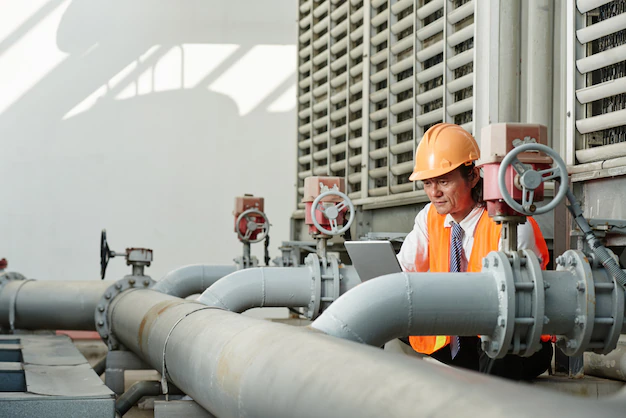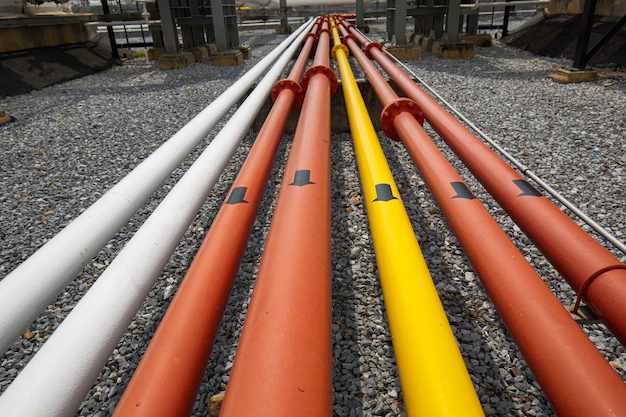An Essential Guide To Commercial Pipe Relining
November 23, 2023

toc impalement
In today’s fast-paced commercial building maintenance sector, the upkeep of plumbing systems plays a pivotal role in the overall functionality and longevity of buildings.
As these systems age or encounter issues, traditional repair methods often lead to significant disruptions and high costs. In response to these challenges, pipe relining has surfaced as a groundbreaking technique, offering a less intrusive, more economical, and highly efficient alternative to conventional pipe repair methods.
This technology not only preserves the structural integrity of buildings but also ensures minimal operational downtime, a critical factor in commercial settings.
Our guide aims to provide an in-depth exploration of commercial pipe relining, dissecting its intricate processes, highlighting its numerous advantages, and outlining key factors to consider when implementing this innovative solution.
This thorough understanding empowers facility managers, property owners, and maintenance professionals to make informed decisions, ensuring their plumbing infrastructure’s optimal performance and sustainability.
Understanding The Basics Of Commercial Pipe Relining
Pipe relining, a cornerstone in modern plumbing maintenance, is a nuanced technique that revitalizes damaged pipes by inserting a new lining into the existing pipeline. This method, particularly pivotal in commercial sectors, offers a pragmatic solution where traditional excavation is either impractical or cost-prohibitive. In commercial settings, where operations run on tight schedules and budgets, pipe relining emerges as an indispensable option.
The technique involves using a resin-saturated liner, which adheres to its interior when inserted into the damaged pipe, effectively creating a new, robust pipe within the old one. This method not only preserves the structural integrity of the building by avoiding major excavations but also ensures a longer lifespan for the plumbing systems with minimal disruption.
Advantages Of Pipe Relining In Commercial Settings
Pipe relining in commercial environments extends beyond mere cost savings. Its streamlined approach translates into less labor, reduced material use, and shorter project timelines than traditional pipe repair methods. The minimized disruption is a key advantage, particularly in commercial settings where business continuity is paramount. With pipe relining, businesses can maintain their regular operations without the interference of extensive construction sites.
This approach saves direct repair costs and avoids the indirect costs of business interruptions. Furthermore, the non-invasive nature of pipe relining means preserving the aesthetic and structural integrity of commercial properties, which is often a significant concern for property managers and owners.
Innovative Materials Used In Pipe Relining
The selection of materials in pipe relining is a critical factor in its success, with epoxy resin for vertical pipe lining being a standout choice. Epoxy resin’s high adaptability and excellent bonding properties make it ideal for vertical applications, where gravity and pressure factors are critical.
Its ability to form a seamless and sturdy new lining inside the existing pipe ensures a long-lasting repair. These materials are chosen for their resilience to common pipe issues like corrosion, tree root intrusion, and wear and tear, making them a valuable long-term investment for commercial plumbing systems.
The Process Of Commercial Pipe Relining
The pipe relining process, while straightforward, requires precision and expertise. It begins with a thorough inspection of the damaged pipes, often using video technology, to assess the extent and nature of the damage. Following this, the pipes are meticulously cleaned to remove debris or obstructions, ensuring the new lining can adhere correctly.
The resin-saturated liner is then inserted into the pipe. Once in place, it is expanded to fit snugly against the pipe’s inner walls and cured, typically using heat, UV light, or steam, to harden the resin and form a new, solid pipe lining. This process, adaptable to various pipe sizes and types, offers a tailored solution to various commercial pipe issues.


Choosing The Right Service Provider For Pipe Relining
Selecting an experienced and reliable service provider is critical in commercial pipe relining. Partnering with a company with a proven track record in successful pipe relining projects is essential. It understands the unique needs of commercial plumbing systems.
The right provider should offer transparent communication, comprehensive service offerings, and the latest technology in pipe repair. They should be equipped to handle the complexities of commercial plumbing systems and offer solutions tailored to the property’s specific needs.
Maintenance And Care Post-Relining
Post-relining maintenance is pivotal in extending the life of the newly lined pipes. Regular inspections and cleanings are essential to ensure the lining remains intact and functional. This proactive approach helps in the early identification of potential issues, preventing costly repairs down the line. Regular maintenance also ensures compliance with local plumbing standards and helps maintain the overall health of the commercial plumbing system.
Cost Considerations And ROI Of Pipe Relining
While the initial investment in pipe relining may be higher than some traditional methods, the long-term ROI is significant. The cost savings in labor and materials and reduced operational disruptions make it a financially sound choice for commercial properties. The longevity and reduced maintenance requirements of relined pipes further contribute to the ROI, making pipe relining a cost-effective solution for commercial plumbing maintenance.
Environmental Impact Of Pipe Relining
From an environmental standpoint, pipe relining is more sustainable than traditional pipe replacement. Minimizing the need for excavation reduces soil disturbance, lowers the carbon footprint associated with heavy machinery, and conserves resources by extending the life of existing pipes. This environmentally friendly approach aligns with modern sustainable practices, making it an increasingly preferred method in eco-conscious commercial settings.
Conclusion
The advent of pipe relining marks a transformative era in commercial plumbing maintenance, presenting a harmonious amalgamation of economic viability, operational continuity, and ecological responsibility. This innovative technique is a testament to modern engineering, offering a pragmatic and sustainable solution to traditional plumbing challenges.
By delving into the intricate workings, diverse benefits, and critical considerations of pipe relining, stakeholders in commercial enterprises are equipped with the knowledge to make strategic decisions. These decisions contribute to the prolonged effectiveness and dependability of plumbing systems and align with broader goals of cost management and environmental stewardship. In essence, pipe relining emerges not just as a method for repair but as a strategic investment in the future of commercial infrastructure.
Read Also:


















Comments Are Closed For This Article